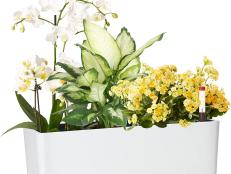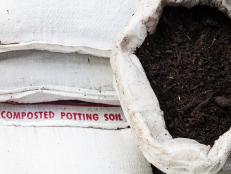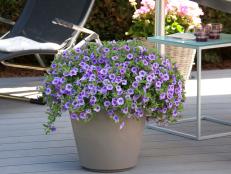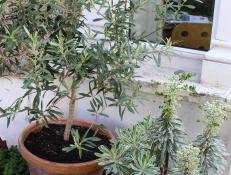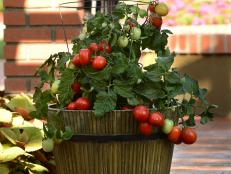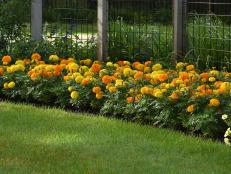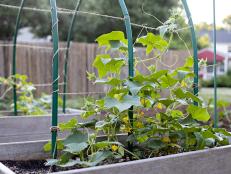Fertilizing Houseplants 101 (Plus, How to Make Inexpensive Homemade Fertilizers)
Got a frazzled fern or a distressed dieffenbachia? Get tips on how and when to fertilize and find out which pantry items can be used to perk up your plants.

Granular fertilizers like Greenview's Natural Start should be sprinkled over the soil of your potted plants and watered in thoroughly.
Are your houseplants hungry? If they’ve been in the same soil for a while, they probably are. Over time, watering leaches out nutrients, and since they're in containers, they can't send out roots for more food. Signs of distress include stunted or weak growth, yellow leaves or chlorosis (yellowing between the leaf veins).
Fresh fertilizer can give them a boost, but before you apply it, check that your problem isn’t due to something else, like insects, disease or improper watering. Once you’ve eliminated those possibilities, you can get your houseplants back on the road to good health.
When to Fertilize
A rule of thumb is to fertilize only when your houseplants are actively growing. Feeding them while they're dormant can burn their foliage or even kill them.
When you fertilize, don’t overdo it. Too much can be worse than not enough, so follow the directions on the product you’re using. If you want to stay on the safe side, dilute liquid fertilizers by half.
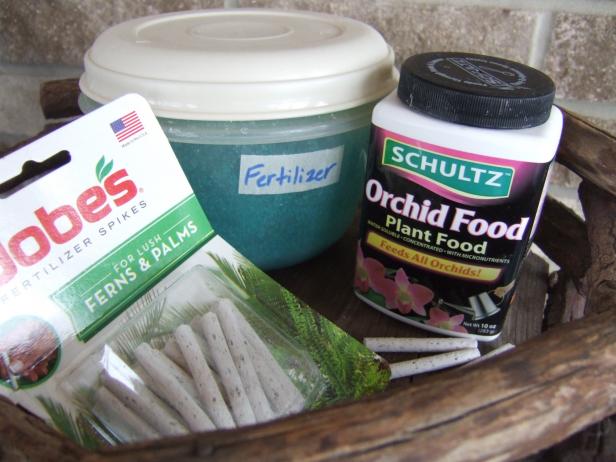
Julie Martens Forney
Water-soluble and slow-release houseplant fertilizers are popular and easy to use.
What to Use
Nurseries and garden centers sell liquid, stick and tablet fertilizers, or you can buy slow-release or granular forms. Although they're easy to use, some gardeners don’t care for sticks and tablets because they feel that they don’t do a good job of dispersing the fertilizer throughout the entire pot.
Liquid fertilizers can be added directly to your watering can. Some are meant to be used every time you water or every other time. Read your product label to know when and how much to apply.
Slow-release fertilizers like Osomcote come in resin-coated, time-released pellets. Their nutrients are slowly released every time you water.
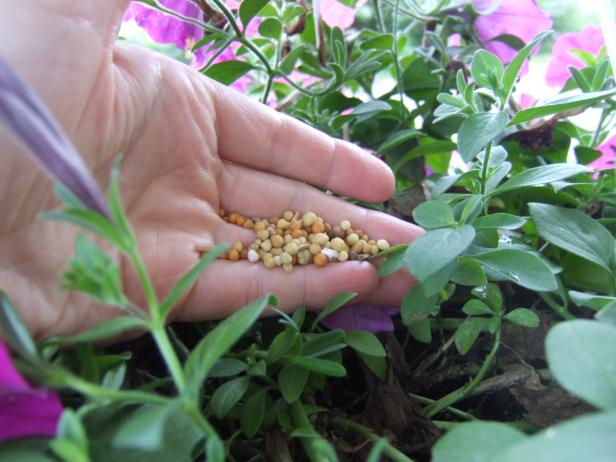
Julie Martens Forney
Slow-release fertilizers may be more expensive than other types, but one application can last for months.
General purpose, indoor plant fertilizers are fine for most houseplants. They contain three important macronutrients: nitrogen (N) for foliage growth, phosphorous (P) to promote roots and potassium (K) for healthy blooms. Some fertilizers also contain micronutrients like manganese, boron and magnesium.
For best results, use specialty fertilizers designed for African violets, tropicals, cacti and certain other houseplants.
Organic Fertilizers
Many gardeners prefer organic fertilizers over chemical ones because they break down over time and improve the soil, helping it hold more nutrients and water. Organic fertilizers usually come from plant waste (compost), animal waste (manure) or powdered minerals like bone meal. They're sometimes called “natural,” although they may have been lightly processed.
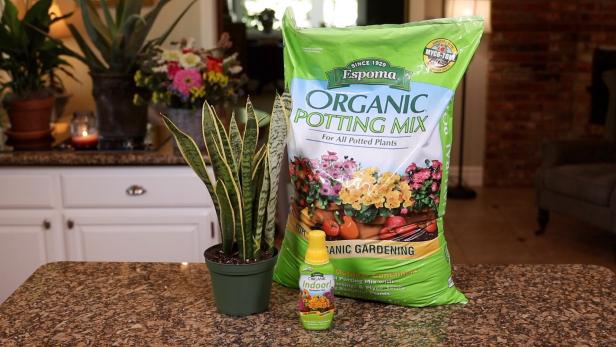
If your houseplant isn't growing, or roots are coming out of the bottom of its container, move it to a larger pot. Use an organic potting mix and a liquid fertilizer to encourage new growth.
"Homemade" Fertilizers
Want to nourish your houseplants naturally and save money? Try using kitchen leftovers or household items, like these:
- Eggshells. Save your used eggshells, crush them and add them to boiling water. Let them steep overnight, then strain the water and use it to give your plants a calcium boost.
- Used coffee grounds. Mix equal amounts of the grounds with tap water to refresh acid-loving plants like ferns. The grounds contain potassium and magnesium, which encourage plants to grow. You can also water with a solution of one green tea bag steeped in two gallons of water. Allow the water to cool before using it.
- Aquarium water. When you clean your freshwater fish tank, save the water for your plants. Fish waste is good for them. Never use the water from a saltwater tank.
- Epsom salt. Raid your bathroom cabinet for Epsom salt; it contains magnesium and sulfate to help make plants green and lush. Water them twice a month with a tablespoon of Epsom salt dissolved in a gallon of cool water.







